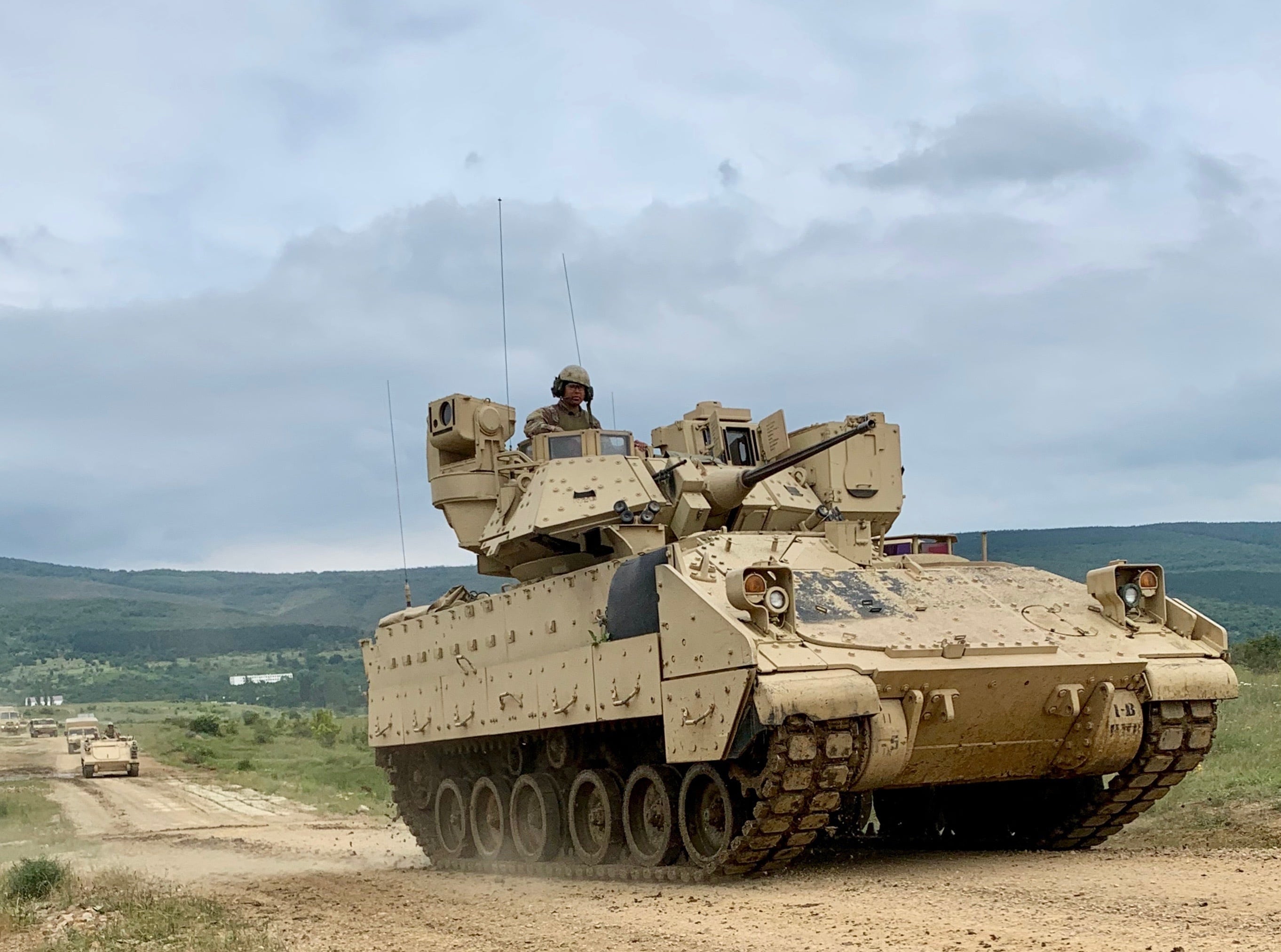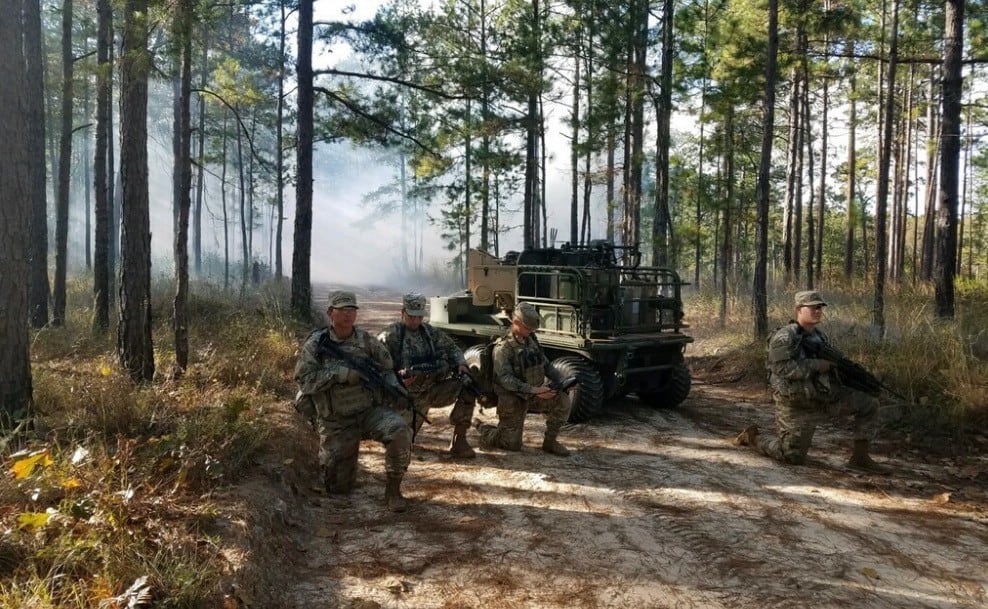Soldiers with the 3rd Infantry Division recently spent a month running variants of the Army’s Robotic Combat Vehicle in contact, attack and defense missions with a rifle platoon.
Those soldiers, from A Company, 1st Battalion of the 28th Infantry, took four RCV surrogate vehicles in the “Project Origin” fleet to test new technologies the Army wants at the fingertips of its ground forces.
The aim of the most recent experiment was to see what an RCV would add to a rifle platoon’s toolkit. To that end, soldiers ran movements to contact, attacks and defense missions with their standard formation and then did the same maneuvers with the RCV, according to an Army statement.
RELATED

Soldiers from A Company used a tethered drone, counter-drone jammer, modular smoke obscuration module and a Common Remotely Operated Weapon System that had both an M240 machine gun and Javelin missile. They ran those systems during dismounted movements.
The operators were also able to use the RCV autonomous drive functions and run it through an amphibious movement when they “swam” it across Victory Pond at Fort Benning, Georgia.
The RCVs were helpful in defensive operations and in easily maneuverable terrain but had difficulties working alongside soldiers in dense vegetation during dismounted operations, according to the statement.
Army Times sister publication Defense News reported in September that the service wants to field light, medium and heavy versions of the RCV. The light version could be in manufacturing within the next three years, followed shortly afterward by the medium then heavy version.
Brig. Gen. Ross Coffman directs the Army’s Next Generation Combat Vehicle Cross Functional Team.
Coffman said in the statement that they’ll use feedback from this month-long event to evaluate force structures within the Infantry Brigade Combat Team.
Army Times reported in October that the Maneuver Center of Excellence, also at Fort Benning, is rethinking the composition of its BCTs. Nothing is final yet, leaders are still in conceptual stages of how to reorganize these formations for the next fight, Maj. Gen. Patrick Donahoe, MCOE commander, said at the time.
“We’re doing a real deep look at the BCT, as the Army moves from the BCT to the division as the unit of action,” Donahoe said. “We are in the process of developing the organization for the division cavalry squadron.”
It’s likely that if programs such as the NGCV and its subset, RCV, are successful that they will have a major impact on how the infantry moves around the battlefield.
Conversions are underway already. Back in 2018, the Army started converting some of its Stryker Brigade Combat Teams into Armored BCTs and switching some Infantry BCTs to SBCTs.
The MCOE team is evaluating a light BCT formation that would motorize the infantry by bringing in these new vehicles and capabilities to the unit.
The final configuration of the brigade is far from decided, but it will likely be smaller than it is today, as it divests some of what it now does to the division, Donahoe said.
Robotics and artificial intelligence will make first contact with the enemy unmanned, “whether robotic scouts or at the edge of a minefield,” he said.
Todd South has written about crime, courts, government and the military for multiple publications since 2004 and was named a 2014 Pulitzer finalist for a co-written project on witness intimidation. Todd is a Marine veteran of the Iraq War.





